Considerations for Keeping a Dog in a High-Rise Apartment: A Veterinarian’s Perspective
In Tokyo, more and more residents are choosing high-rise apartment living. It follows that an increasing number are bringing dogs into those vertical spaces. Yet while such residences offer comfort and convenience, they also impose constraints and create subtle environmental differences that may affect an animal’s well-being. From a veterinary standpoint, here are key points to keep in mind.
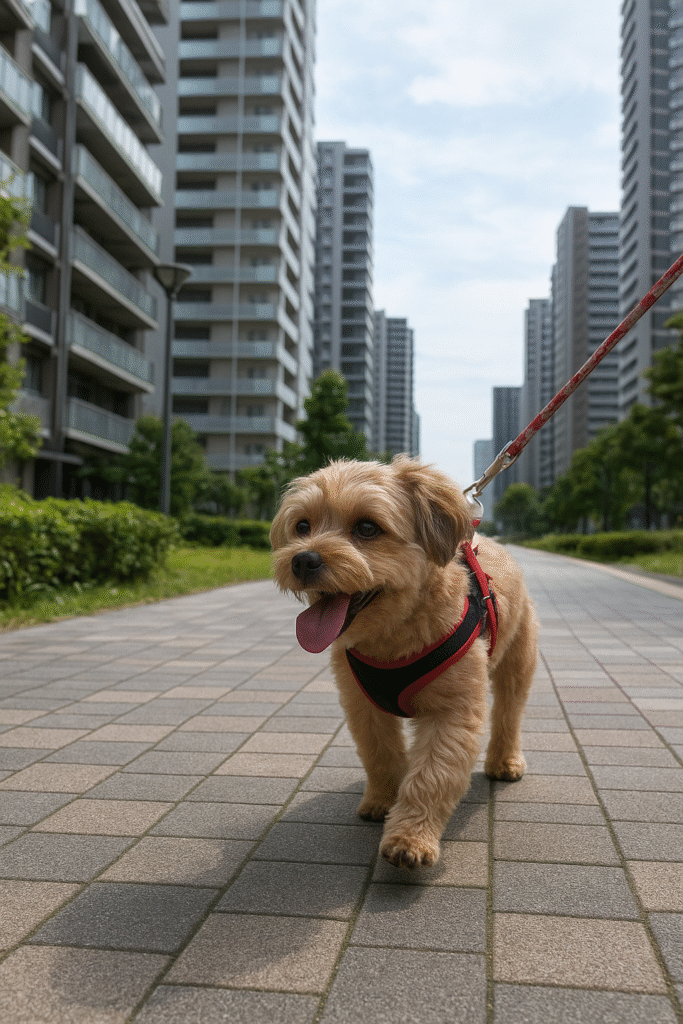
1. Guarding Against Insufficient Exercise and Disrupted Rhythms

Without a yard or open ground to roam, dogs in high-rise buildings are particularly vulnerable to a sedentary lifestyle. For medium to large breeds, meeting daily exercise requirements becomes a challenge. The consequences might include obesity, joint disorders, or behavioral issues such as excessive barking or mischievous acts.
To mitigate these risks, owners must take deliberate steps: schedule regular morning and evening walks during cooler hours, incorporate indoor mental stimulation toys or training, and maintain a consistent daily schedule.
One practical obstacle: elevators. For some dogs, the narrow, enclosed space or unexpected jolts may provoke anxiety. Room to calm them with words, offering a carrier or carrying them when appropriate, can ease their distress.
2. Effects of Air Pressure and Temperature Variations
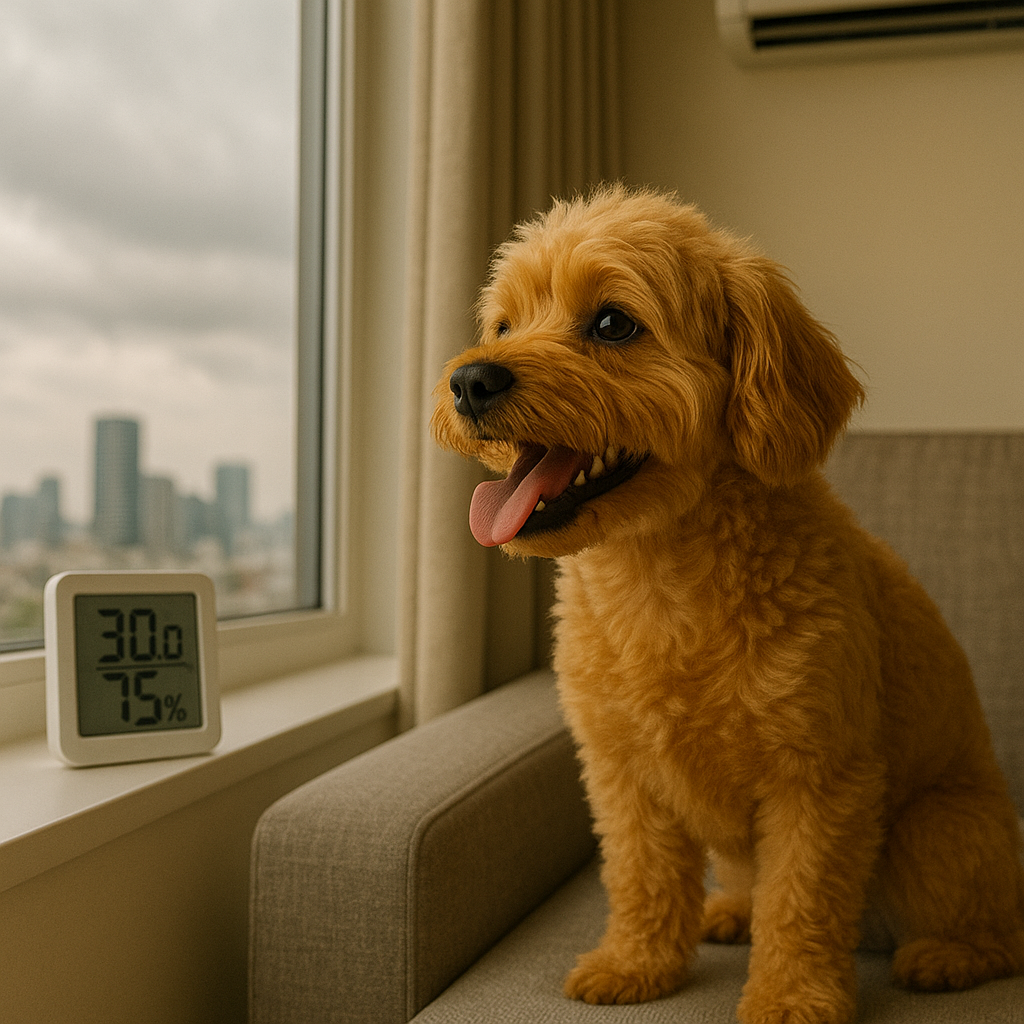
At altitude, atmospheric pressure is marginally lower than at ground level. Some dogs may experience ear discomfort or subtle physiological stress. In particular, those with sensitivity or respiratory vulnerabilities require close monitoring.
Built-in ventilation systems often keep high floors cooler in summer than detached homes, which can be advantageous. Still, overzealous air conditioning in summer and dry heating in winter pose risks. Dogs regulate temperature less effectively than people, making them more susceptible to heatstroke, skin problems, or respiratory distress. Keeping a pet-appropriate thermometer and hygrometer, and judiciously using AC and humidifiers, helps maintain a safe environment.
3. Mitigating Noise and Barking-Related Disputes
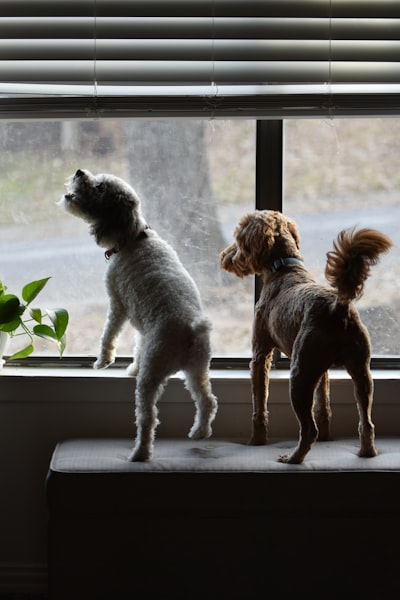
Dog barking in a high-rise may reverberate through walls and floors more than expected. Unchecked barking—especially when the dog is left alone or at night—frequently leads to conflicts with neighbors.
Early socialization training is essential, teaching dogs to settle on cue from puppyhood. Owners might play ambient sound, leave puzzle toys or chew treats to stave off boredom, and, if challenges persist, seek assistance from trainers or veterinarians. In areas rich in tower apartments—such as Tokyo’s waterfront districts—many owners share these challenges, making a local, pet-friendly veterinary contact especially useful.
4. Awareness of Pet Policies and Shared-Space Etiquette
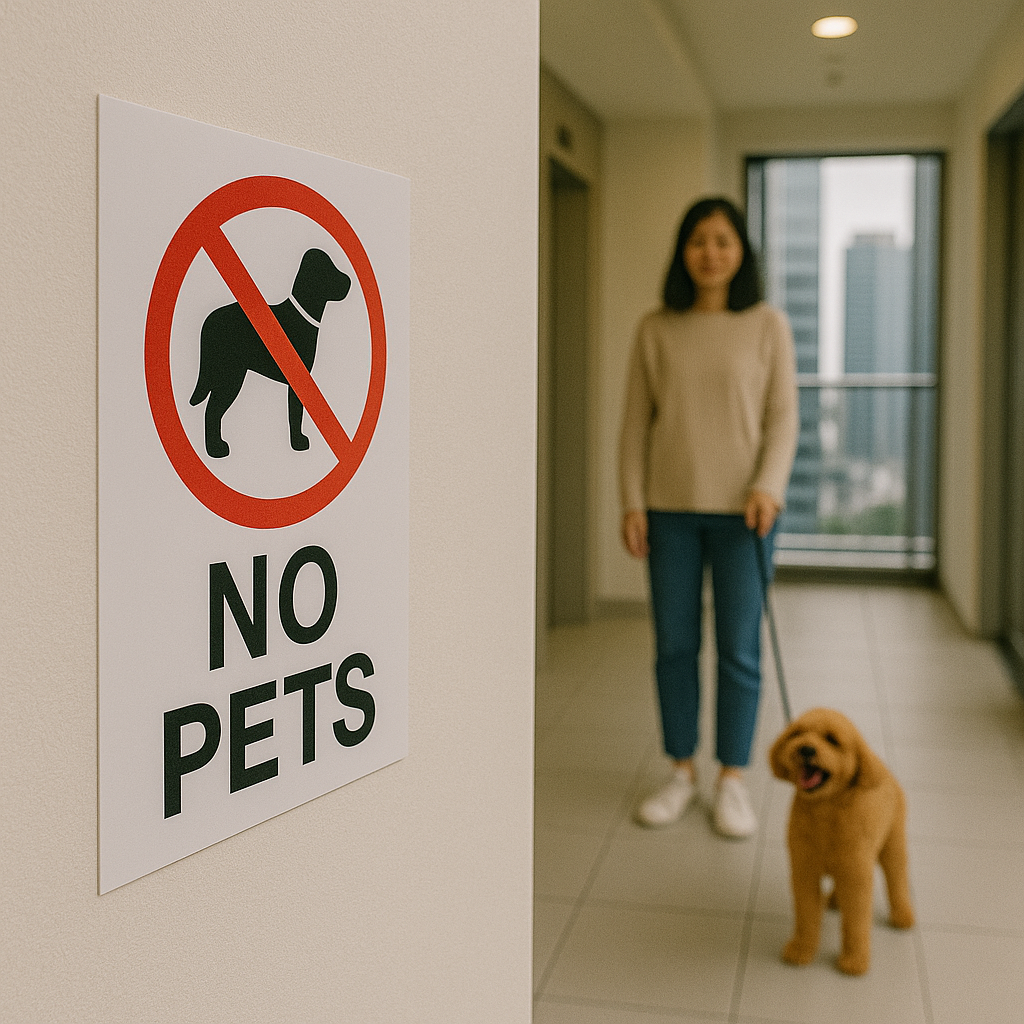
Most high-rise developments impose rules related to pet ownership: mandating carriers or being carried in elevators and hallways, forbidding balcony defecation, restricting leash length in common areas, and so on. Respecting these rules is vital to sustaining a harmonious living environment for all residents.
When walking your dog, take care not to soil common areas; clean up immediately if accidents happen. Because some residents may be uneasy around dogs, it is courteous to hold a short leash, avoid crowded elevator rides, or wait for fewer occupants before using shared spaces.
Conclusion: Toward a Comfortable, Healthy Life in the Sky
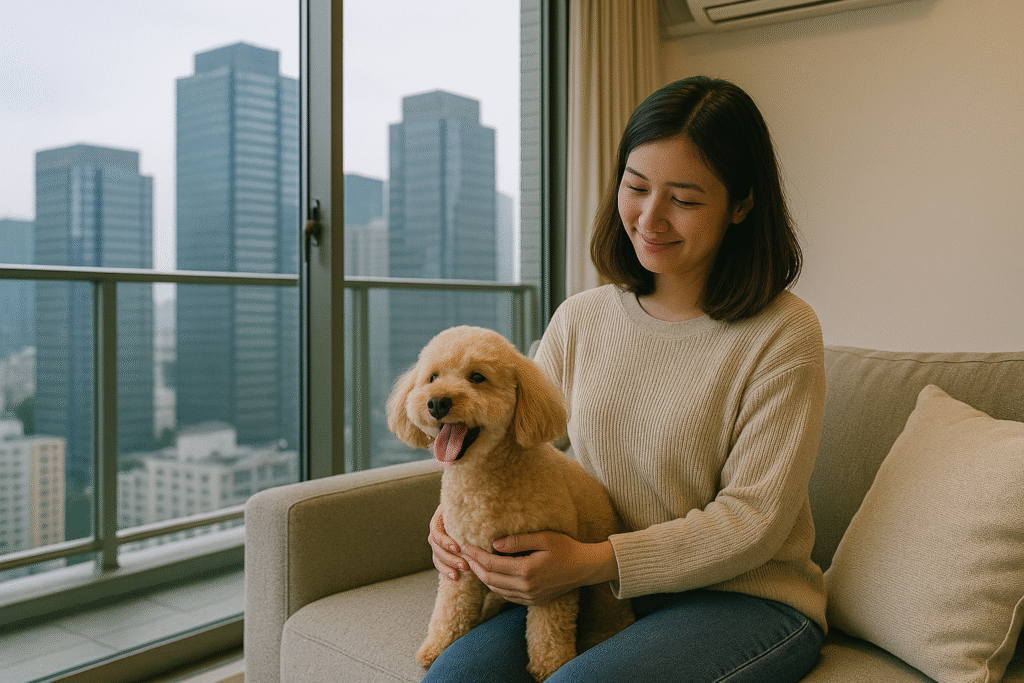
High-rise living can be a viable and even rewarding lifestyle for dogs and their owners. But success depends on acknowledging and adjusting for its challenges: ensuring sufficient activity, managing air and climate, training early for calm behavior, and observing building rules.
Daily diligence — in arranging walks and play, monitoring subtle changes in behavior or health, and seeking regular veterinary checkups — fosters a safe and dignified life. When feelings of worry arise — about inactivity, barking, or health — owners should not hesitate to consult experts.
At Anima Animal Hospital in the Tsukishima area — surrounded by Tokyo’s skyscrapers — the staff receives both domestic and international clients. They strive to be multilingual friendly, accepting even small queries from foreign pet owners. High-rise environments may be unique, but with thoughtful care and community-minded habits, pet and owner alike can find comfort and trust in shared urban life.
Our Web site https://anima-ah.com
